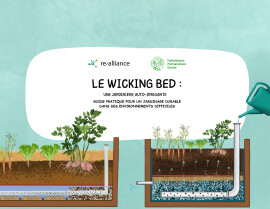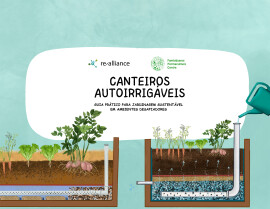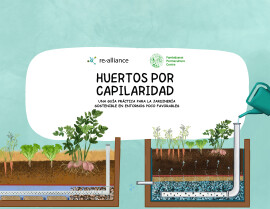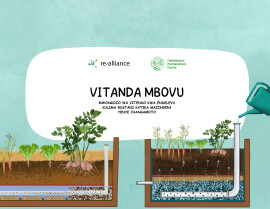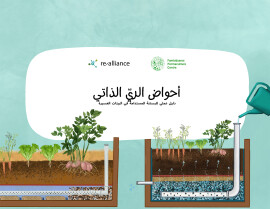
Famine Early Warning and Response
The missing link
Margaret Buchanan-Smith, Susanna Davies
Drawing on case studies from Ethiopia, Sudan, Chad, Mali and Kenya (focusing on Turkana district) during the drought years of 1990-91, this book investigates why early warning signals were not translated into timely intervention. It examines, for the first time, the role of early warning information in decision-making processes, particularly within key donor agencies. The book concludes with practical policy recommendations, on who 'owns' early warning information, how it is used and looks at how to speed up the logistics of emergency relief.
Published: 1995
Pages: 242
eBook: 9781780444925
Paperback: 9781853392917
| LIST OF TABLES Vlll | |||
|---|---|---|---|
| LIST OF FIGURES ix | |||
| ACKNOWLEDGEMENTS X | |||
| ACRONYMS xi | |||
| 1: The Missing Link 1 | |||
| Introduction 1 | |||
| Understanding famine 3 | |||
| Early warning 4 | |||
| Famine prevention: the relief response 5 | |||
| The Sahel and Horn of Africa: conditions ripe for famine 6 | |||
| The actors 8 | |||
| Conclusions 10 | |||
| 2: What are Famine Early-warning Systems? 12 | |||
| Introduction 12 | |||
| EWS as information systems 12 | |||
| Information generated by EWS 15 | |||
| Use of EW information 18 | |||
| Constraints to the use of EW information 19 | |||
| Conclusions 24 | |||
| 3: The International Relief System 26 | |||
| Introduction 26 | |||
| Preventing famine: whose responsibility? 27 | |||
| What is the international relief system? 28 | |||
| Profile of four donor agencies 30 | |||
| The political context of emergency aid to Africa in 1990-91 33 | |||
| Sources of EW information used by donor agencies 36 | |||
| Influence of the media 41 | |||
| Influence of formal political channels 43 | |||
| Making decisions about the relief response 44 | |||
| Executing decisions: the relief response 48 | |||
| Donor co-ordination 50 | |||
| Conclusions 51 | |||
| 4: Ethiopia 55 | |||
| Introduction 55 | |||
| Food security 57 | |||
| The EW/response system 61 | |||
| The story of EW/response in 1990-91 66 | |||
| Evaluating the EW information 71 | |||
| Use of EW information 74 | |||
| Implications for the final response 77 | |||
| Insecurity and the EW/response process 78 | |||
| Conclusions 80 | |||
| 5: Sudan 84 | |||
| Introduction 84 | |||
| Food security in north Sudan, focusing on Darfur 86 | |||
| The EW/response system 88 | |||
| The story of EW/response in 1990-91 91 | |||
| Evaluating the EW information 97 | |||
| Use of EW information 100 | |||
| Implications for the final response 105 | |||
| Insecurity and the EW/response process 106 | |||
| Conclusions 107 | |||
| 6: Chad 111 | |||
| Introduction 111 | |||
| Food security 113 | |||
| The EW/response system 116 | |||
| The story of EW/response in 1990-91 119 | |||
| Evaluating the EW information 124 | |||
| Use of EW information 128 | |||
| Implications for the final response 134 | |||
| Insecurity and the EW/response process 135 | |||
| Conclusions 135 | |||
| 7: Mali 139 | |||
| Introduction 139 | |||
| Food security 141 | |||
| The EW/response system 144 | |||
| The story of EW in 1990-91 148 | |||
| Evaluating the EW information 151 | |||
| The story of response in 1990-91 151 | |||
| Use of EW information 155 | |||
| Implications for the final response 156 | |||
| Insecurity and the EW/response process 159 | |||
| Conclusions 160 | |||
| vi | |||
| 8: Turkana District, Kenya 165 | |||
| Introduction 165 | |||
| Food security 167 | |||
| The EW response system 175 | |||
| The Emergency Livestock Purchase Scheme: 1990 178 | |||
| Food crisis and food-for-work in Kakuma Division: 1991 181 | |||
| District-wide drought in 1992 183 | |||
| Evaluating the EW information 185 | |||
| Use of EW information 189 | |||
| Implications for the final response in 1990 and 1991 193 | |||
| Insecurity and the EW/response process 196 | |||
| Conclusions 197 | |||
| 9: Forging the Link 202 | |||
| Introduction 202 | |||
| EWS are necessary 204 | |||
| Common patterns in how EW information is used 205 | |||
| Forging the link 208 | |||
| GENERAL REFERENCES 212 | |||
| CASE-STUDY REFERENCES 214 | |||
| Ethiopia 214 | |||
| Sudan 216 | |||
| Chad 217 | |||
| Mali 218 | |||
| Turkana District, Kenya 219 | |||
| INDEX 221 |
Margaret Buchanan-Smith
Margaret Buchanan-Smith is currently Senior Research Associate and freelance consultant at Overseas Development Institute, London, UK.
Famine Intensity and Magnitude Scales: A Proposal for an Instrumental Definition of Famine
Howe, Paul
Devereux, Stephen
Disasters, Vol. 28 (2004), Iss. 4 P.353
https://doi.org/10.1111/j.0361-3666.2004.00263.x [Citations: 78]Les coulisses du monde des catastrophes « naturelles »
Bibliographie
Revet, Sandrine
2018
https://doi.org/10.4000/books.editionsmsh.11760 [Citations: 0]Climate Change and the Challenge of Non-equilibrium Thinking
Scoones, Ian
IDS Bulletin, Vol. 35 (2004), Iss. 3 P.114
https://doi.org/10.1111/j.1759-5436.2004.tb00144.x [Citations: 25]International Development and Assistance: Where Politics Meets Economy
Bolesta, Andrzej
(2004)
https://doi.org/10.2139/ssrn.895947 [Citations: 0]An Investigation into the Effect Of Stochastic Annual Rainfall on Crop Yields in South Western Australia
Vagh, Yunous
(2012) P.227
https://doi.org/10.7763/IJIET.2012.V2.116 [Citations: 3]Early warning systems and evacuation: rare and extreme versus frequent and small‐scale tropical cyclones in the Philippines and Dominica
Yore, Rebekah
Walker, Joanna Faure
Disasters, Vol. 45 (2021), Iss. 3 P.691
https://doi.org/10.1111/disa.12434 [Citations: 20]Peasants, Famine and the State in Colonial Western India
Introduction
Hall-Matthews, David
2005
https://doi.org/10.1057/9780230510517_1 [Citations: 0]Early Warning Systems for Natural Disaster Reduction
The Human Factor in Early Warnings: Risk Perception and Appropriate Communications
Twigg, John
2003
https://doi.org/10.1007/978-3-642-55903-7_4 [Citations: 32]International Targets for Poverty Reduction and Food Security: A Mildly Sceptical But Resolutely Pragmatic View With a Call for Greater Subsidiarity
Maxwell, Simon
IDS Bulletin, Vol. 30 (1999), Iss. 2 P.92
https://doi.org/10.1111/j.1759-5436.1999.mp30002009.x [Citations: 5]La dimension politique des systèmes d'alerte précoce.
Enten, François
Mondes en développement, Vol. n° 137 (2007), Iss. 1 P.89
https://doi.org/10.3917/med.137.0089 [Citations: 5]Famine Early Warning Systems and Remote Sensing Data
Conceptual Frameworks
Brown, Molly E
2008
https://doi.org/10.1007/978-3-540-75369-8_2 [Citations: 0]Applying Resilience Thinking to Questions of Policy for Pastoralist Systems: Lessons from the Gabra of Northern Kenya
Robinson, Lance W.
Berkes, Fikret
Human Ecology, Vol. 38 (2010), Iss. 3 P.335
https://doi.org/10.1007/s10745-010-9327-1 [Citations: 39]Famine Early Warning Systems and Remote Sensing Data
Food Markets and Prices
Brown, Molly E
2008
https://doi.org/10.1007/978-3-540-75369-8_12 [Citations: 0]Ground Water Security and Drought in Africa: Linking Availability, Access, and Demand
Calow, Roger C.
MacDonald, Alan M.
Nicol, Alan L.
Robins, Nick S.
Groundwater, Vol. 48 (2010), Iss. 2 P.246
https://doi.org/10.1111/j.1745-6584.2009.00558.x [Citations: 197]Effective Humanitarian Assistance to Southern Sudan: The Legal, Political and Economic Constraints
Bolesta, Andrzej
(2002)
https://doi.org/10.2139/ssrn.309700 [Citations: 0]Food Security
4 Tomorrow's Hunger: A Framework for Analysing Vulnerability to Food Security
Løvendal, Christian Romer
Knowles, Marco
2007
https://doi.org/10.1093/acprof:oso/9780199236558.003.0004 [Citations: 5]Why do Famines Persist?
Maxwell, Daniel
IDS Bulletin, Vol. 33 (2002), Iss. 4 P.48
https://doi.org/10.1111/j.1759-5436.2002.tb00043.x [Citations: 10]Agricultural Survey Methods
Measuring Household Resilience to Food Insecurity: Application to Palestinian Households
Alinovi, Luca
Mane, Erdgin
Romano, Donato
2010
https://doi.org/10.1002/9780470665480.ch21 [Citations: 66]Travelling in antique lands: using past famines to develop an adaptability/resilience framework to identify food systems vulnerable to climate change
Fraser, Evan D. G.
Climatic Change, Vol. 83 (2007), Iss. 4 P.495
https://doi.org/10.1007/s10584-007-9240-9 [Citations: 94]The underutilization of street markets as a source of food security indicators in Famine Early Warning Systems: a case study of Ethiopia
Companion, Michèle
Disasters, Vol. 32 (2008), Iss. 3 P.399
https://doi.org/10.1111/j.1467-7717.2008.01046.x [Citations: 5]Future Multilateralism
From Civil War to Civil Peace: Multi-Track Solutions to Armed Conflict
Rupesinghe, Kumar
1999
https://doi.org/10.1007/978-1-349-27153-5_2 [Citations: 0]Disasterland
Preparedness
Revet, Sandrine
2020
https://doi.org/10.1007/978-3-030-41582-2_6 [Citations: 0]Protracted crisis, food security and the fantasy of resilience in Sudan
Jaspars, Susanne
Security Dialogue, Vol. 52 (2021), Iss. 3 P.195
https://doi.org/10.1177/0967010620927279 [Citations: 13]Climate Change and Resilient Food Systems
Building a Resilient Food System: Challenges and a Way Forward
Hebsale Mallappa, Vinaya Kumar
Babu, S. C.
2021
https://doi.org/10.1007/978-981-33-4538-6_1 [Citations: 0]National and international redistribution as tools for poverty reduction
White, Howard
Journal of International Development, Vol. 13 (2001), Iss. 3 P.343
https://doi.org/10.1002/jid.789 [Citations: 11]Five levels of famine prevention: towards a framework for the twenty‐first century and beyond
Howe, Paul
Fitzpatrick, Merry
Maxwell, Daniel
Disasters, Vol. 49 (2025), Iss. 1
https://doi.org/10.1111/disa.12668 [Citations: 3]Humanitarian Information Systems and Emergencies in the Greater Horn of Africa: Logical Components and Logical Linkages
Maxwell, Daniel
Watkins, Ben
Disasters, Vol. 27 (2003), Iss. 1 P.72
https://doi.org/10.1111/1467-7717.00220 [Citations: 50]Livestock Raiding Among the Pastoral Turkana of Kenya:Redistribution, Predation and the Links to Famine
Hendrickson, Dylan
Mearns, Robin
Armon, Jeremy
IDS Bulletin, Vol. 27 (1996), Iss. 3 P.17
https://doi.org/10.1111/j.1759-5436.1996.mp27003003.x [Citations: 36]Natural Disasters and Adaptation to Climate Change
Climate Change and Disaster Risk Management: Challenges and Opportunities
Thomson, Madeleine C.
2013
https://doi.org/10.1017/CBO9780511845710.003 [Citations: 0]Resource dependency and the NGO response to famine: A theoretical study
Kluvers, Ron
Isbister, Trent
Corporate Ownership and Control, Vol. 13 (2015), Iss. 1 P.1006
https://doi.org/10.22495/cocv13i1c9p4 [Citations: 1]Why does famine persist in Africa?
Devereux, Stephen
Food Security, Vol. 1 (2009), Iss. 1 P.25
https://doi.org/10.1007/s12571-008-0005-8 [Citations: 90]Response to the comments on ‘A small world’
Revet, Sandrine
Social Anthropology, Vol. 21 (2013), Iss. 1 P.62
https://doi.org/10.1111/1469-8676.12008 [Citations: 0]A Market Analysis and Decision Tree Tool for Response Analysis: Cash, Local Purchase and/or Imported Food Aid? Background Paper
Maxwell, Daniel G.
Lentz, Erin
Barrett, Christopher B.
(2007)
https://doi.org/10.2139/ssrn.1141990 [Citations: 1]Review of FEWS NET biophysical monitoring requirements
Ross, K W
Brown, M E
Verdin, J P
Underwood, L W
Environmental Research Letters, Vol. 4 (2009), Iss. 2 P.024009
https://doi.org/10.1088/1748-9326/4/2/024009 [Citations: 20]Knowing Just in Time: Use Cases for Mobile Surveys in the Humanitarian World
Morrow, Nathan
Mock, Nancy
Bauer, Jean-Martin
Browning, Jennifer
Procedia Engineering, Vol. 159 (2016), Iss. P.210
https://doi.org/10.1016/j.proeng.2016.08.163 [Citations: 12]Enabling or Disabling? Reflections on the Ethiopian National WASH Inventory Process
Welle, Katharina
Schaefer, Florian
Butterworth, John
Bostoen, Kristof
IDS Bulletin, Vol. 43 (2012), Iss. 2 P.44
https://doi.org/10.1111/j.1759-5436.2012.00306.x [Citations: 3]ASKING THE RIGHT QUESTIONS: COMMUNITY‐BASED STRATEGIES TO COMBAT HUNGER
Chaiken, Miriam S.
Dixon, J. Richard
Powers, Colette
Wetzler, Erica
NAPA Bulletin, Vol. 32 (2009), Iss. 1 P.42
https://doi.org/10.1111/j.1556-4797.2009.01027.x [Citations: 3]Disaster and Development Paradigms: Too Close for Comfort?
Manyena, Siambabala Bernard
Development Policy Review, Vol. 30 (2012), Iss. 3 P.327
https://doi.org/10.1111/j.1467-7679.2012.00579.x [Citations: 33]Biophysical Remote Sensing and Climate Data in Famine Early Warning Systems
Brown, Molly E.
Geography Compass, Vol. 3 (2009), Iss. 4 P.1381
https://doi.org/10.1111/j.1749-8198.2009.00244.x [Citations: 5]Diplomacy, Funding and Animal Welfare
Diplomatic Theory and Practice
Roeder, Larry Winter
2011
https://doi.org/10.1007/978-3-642-21274-1_1 [Citations: 0]
